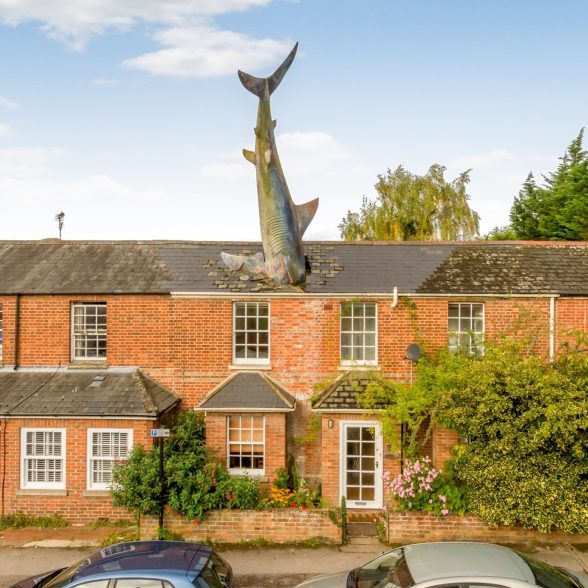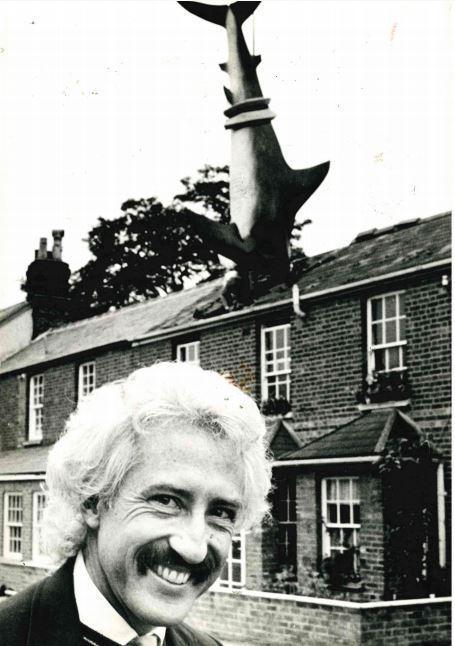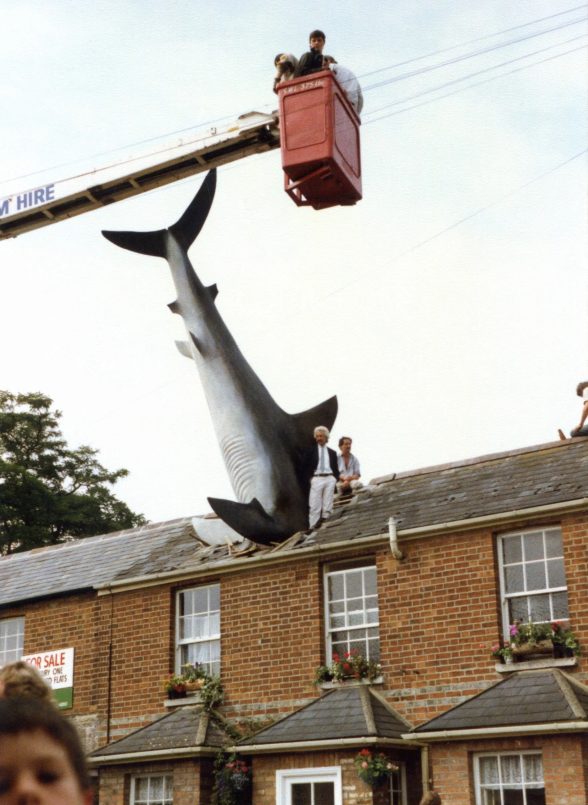This website uses cookies
This website uses cookies to enable it to function properly and to analyse how the website is used. Please click 'Close' to accept and continue using the website.



Image: Ben Harrison
One of Britain’s most unusual and controversial pieces of twentieth century protest art has become a protected landmark, after a raft of nominations to a public consultation and the approval of Oxfordshire County Councillors.
As reported by BBC News, the Guardian and the New Yorker and Washington Post, the ‘Headington Shark’ (officially ‘Untitled, 1986’) was one of 17 sites across the county that was reviewed for local heritage listing, receiving more comments in support than any other candidate.
Created by local journalist and broadcaster Bill Heine with artist friend John Buckley, the 25ft long fiberglass sculpture was installed crashing though the roof of a suburban terrace house in Oxford in August 1986. Intended as an anti-nuclear and anti-war protest, the sculpture was a response to the American bombing campaign in Libya, the shark being used as a metaphor for falling bombs. Its unveiling to the bemused neighbors and local press of Headington, coinciding with the 41st anniversary of the atomic bomb in Nagasaki.
Heine stated: ‘The shark was to express someone feeling totally impotent and ripping a hole in their roof out of a sense of impotence and anger and desperation…. It is saying something about CND, nuclear power, Chernobyl and Nagasaki.’

Image: Oxford Mail
The recent local listing designation marks the latest twist in a 35 year planning saga. Originally installed by Heine without the prior approval of local officials – because he didn’t think they should have the right to decide what art people see – the council subsequently spent 6 years trying to have the sculpture removed.
A retrospective planning application was refused by councillors in 1990, prompting an appeal to the Secretary of State for the Environment in 1992 (then Michael Heseltine), who ultimately allowed the appeal.
Heseltine commented at the time: ‘As a “work of art” the sculpture (“Untitled 1986”) would be “read” quite differently in, say, an art gallery or on another site. An incongruous object can become accepted as a landmark after a time, becoming well known, even well loved in the process. Something of this sort seems to have happened, for many people, to the so-called “Oxford shark”.’
While its popularity as a local landmark has long been assured, the current owner of the property – which is available to rent as an Airbnb let – objected to the new listed status. Magnus Hanson-Heine, son of the late Bill Heine, told the Associated Press:
‘It seems to me that the move misses the whole point of the shark, of everything it stood for. Using the planning apparatus to preserve a historical symbol of planning law defiance is absurd on the face of it.’

Image: David Clover
The government recently allocated funding of £1.5million for the new scheme to develop Local Heritage Lists in 22 areas across the country. This invites nominations from the general public and aims to identify the many historic places that give our regions their distinctive character, but that aren’t currently protected by national listing or any other designation.
C20 Society view local lists as a ‘waiting room’ for potential future national listing candidates and are actively encouraging our members and supporters to submit as many great – and eclectic – twentieth century candidates as possible. From shark sculptures to phone boxes, skateparks to murals, let the only limit be your imagination: get nominating!
Below are links to the UK regions currently conducting public consultations:
The Black Country
Buckinghamshire
Cheshire
Cambridgeshire
Cornwall
County Durham
Dorset
Gloucestershire
Lancashire
Lincolnshire
Greater Manchester
Merseyside
Somerset
South Yorkshire

Become a C20 member today and help save our modern design heritage.